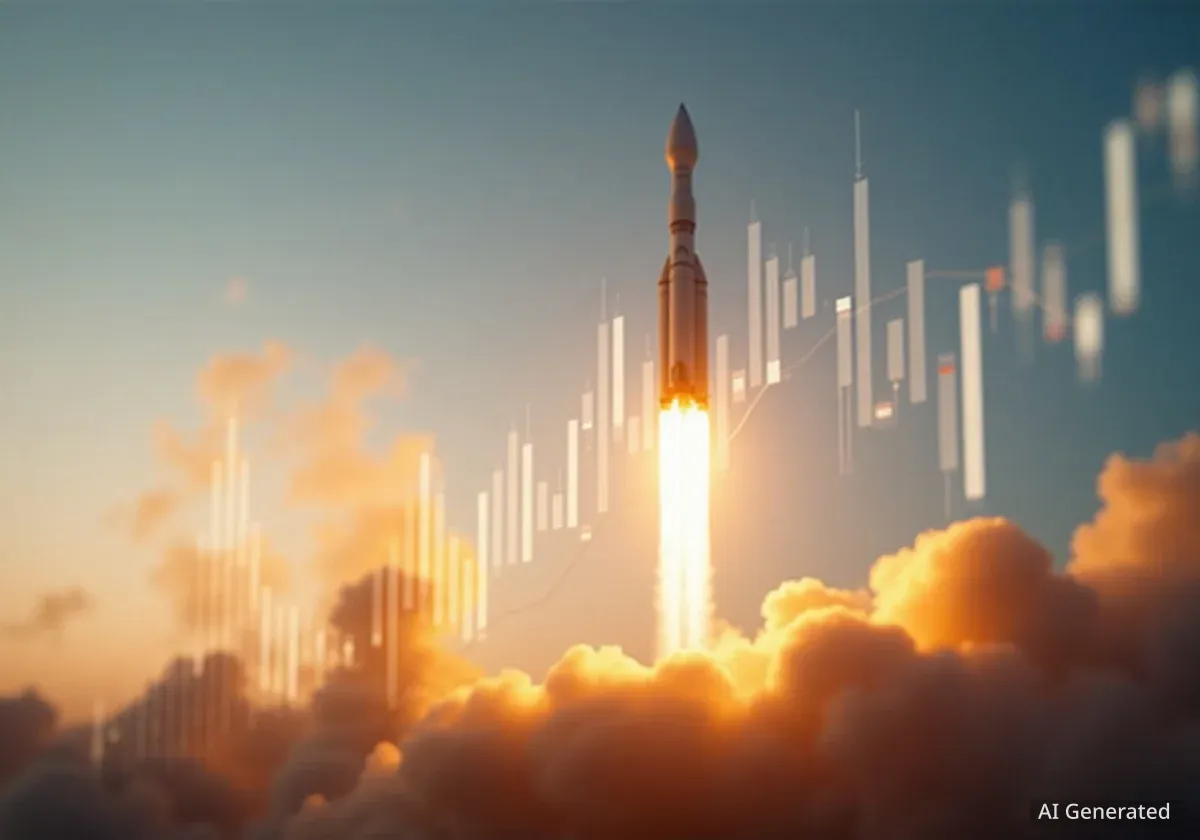The space economy is demonstrating substantial growth, with key market indexes showing returns that significantly exceed those of broader market benchmarks. This expansion is supported by record-level investment and increasing diversification across commercial, civil, and defense sectors, drawing attention from investors looking for long-term growth opportunities.
Recent financial data highlights this trend, with space-focused investment vehicles delivering strong performance over the past year. As capital flows into areas from satellite technology to space tourism, exchange-traded funds (ETFs) provide a way for individuals to gain exposure to this evolving industry.
Key Takeaways
- The S&P Kensho Space Index has outperformed the S&P 500, gaining 68.94% over the past year compared to the S&P 500's 16.28%.
- Global investment in the space sector reached a record $3.5 billion in the third quarter, nearly double the amount from the previous year.
- Key growth drivers for the space economy include space tourism, climate monitoring technology, and national defense applications.
- Several ETFs, such as ARKX, UFO, and ROKT, offer investors different ways to access the space market, varying in liquidity, asset size, and fees.
Market Performance Signals Growing Investor Confidence
The financial performance of the space industry has captured significant market attention. The S&P Kensho Space Index, a benchmark for the sector, has recorded a gain of 68.94% over the past year. Year-to-date, the index is up 47.79%.
These figures stand in sharp contrast to the broader market. Over the same periods, the S&P 500 index gained 16.28% and 14.51%, respectively. This wide performance gap underscores a growing bullish sentiment among investors toward the space economy.
By the Numbers: Space vs. Broader Market
The S&P Kensho Space Index's one-year gain of nearly 69% is more than four times the return of the S&P 500 during the same timeframe, indicating strong sector-specific momentum.
Record Investment Fuels Industry Expansion
The growth in market valuation is backed by a substantial increase in capital investment. According to a report from Seraphim Space, global investment in the space sector reached a record $3.5 billion in the third quarter. This figure represents a significant jump from the $1.79 billion invested during the same period a year ago.
A Diversifying Investment Landscape
The influx of capital is not limited to one area. Funding is being directed across a wide range of segments, including rocket manufacturers, satellite developers, and companies focused on low-Earth orbit (LEO) technologies. This diversification signals a maturing market.
Lucas Bishop, an investment associate at Seraphim Space, commented on this trend in a statement to Reuters. He noted that a greater variety of investable space companies are now entering the market.
"The space sector's transition into a mature and well-rounded market is highlighted by the growing variety of investable space companies entering the market."
Analysts suggest this momentum is driven by a combination of a broader startup ecosystem and sustained government spending on defense and space initiatives in the United States, China, and Europe.
Key Growth Sectors in the Space Economy
The expansion of the space economy is supported by several distinct and rapidly growing sectors. These include commercial ventures like space tourism as well as critical applications in climate science and national defense.
What is the Space Economy?
The space economy encompasses a wide range of activities involved in creating and providing space-related products and services. This includes manufacturing rockets and satellites, providing launch services, analyzing satellite data, and developing new applications for space technology on Earth.
The Rise of Space Tourism
One of the most visible commercial applications is space tourism. The sector is projected to expand significantly, driven by interest from high-net-worth individuals and continued investment in research and development from private companies.
According to a report by Grand View Research, the global space tourism market is forecast to reach $10.09 billion by 2030. The report projects a compound annual growth rate (CAGR) of 44.8% from 2024 to 2030, making it one of the fastest-growing segments of the industry.
Applications in Climate and Defense
Space technology is also becoming essential for addressing global challenges. Satellites play a critical role in climate control and disaster management by providing data for:
- Early warning systems for natural disasters
- Monitoring climate change and environmental conditions
- Ensuring resilient communication networks during emergencies
- Optimizing logistics and tracking through positioning data
Simultaneously, space has been identified as a crucial domain for national security. At a recent Space Defense and Security Summit, several NATO members emphasized that space is now considered a warfighting domain. According to DefenseNews, this shift requires updated defense strategies and faster response capabilities. Modern military operations increasingly rely on space-based systems for communication, surveillance, and navigation, as seen in concepts like the United States' Golden Dome missile defense system.
Navigating Space Investment Through ETFs
For investors interested in the space economy, exchange-traded funds (ETFs) offer a diversified approach to entering the market. While these funds can be more volatile than broad market indexes, they provide exposure to the sector's long-term growth potential. Several options are available, each with different characteristics.
Comparing Popular Space ETFs
Investors have a few key funds to consider when looking to add space industry exposure to their portfolios:
- ARK Space Exploration & Innovation ETF (ARKX): This fund is notable for its high liquidity, with a one-month average trading volume of approximately 289,900 shares. It also holds the largest asset base among its peers, with around $528 million in assets under management.
- Procure Space ETF (UFO): This fund tracks companies that derive a majority of their revenue from space-related business.
- SPDR S&P Kensho Final Frontiers ETF (ROKT): With an annual fee of 0.45%, ROKT is presented as the most cost-effective option, making it potentially suitable for long-term investors concerned with management costs.
- Spear Alpha ETF (SPRX): This fund invests in companies related to industrial technology, including space exploration.
Financial advisors often recommend a long-term investment strategy for thematic funds like these to better navigate market volatility and capitalize on the industry's projected growth trajectory. As the space economy continues to expand, these investment vehicles provide a structured way to participate in its development.





